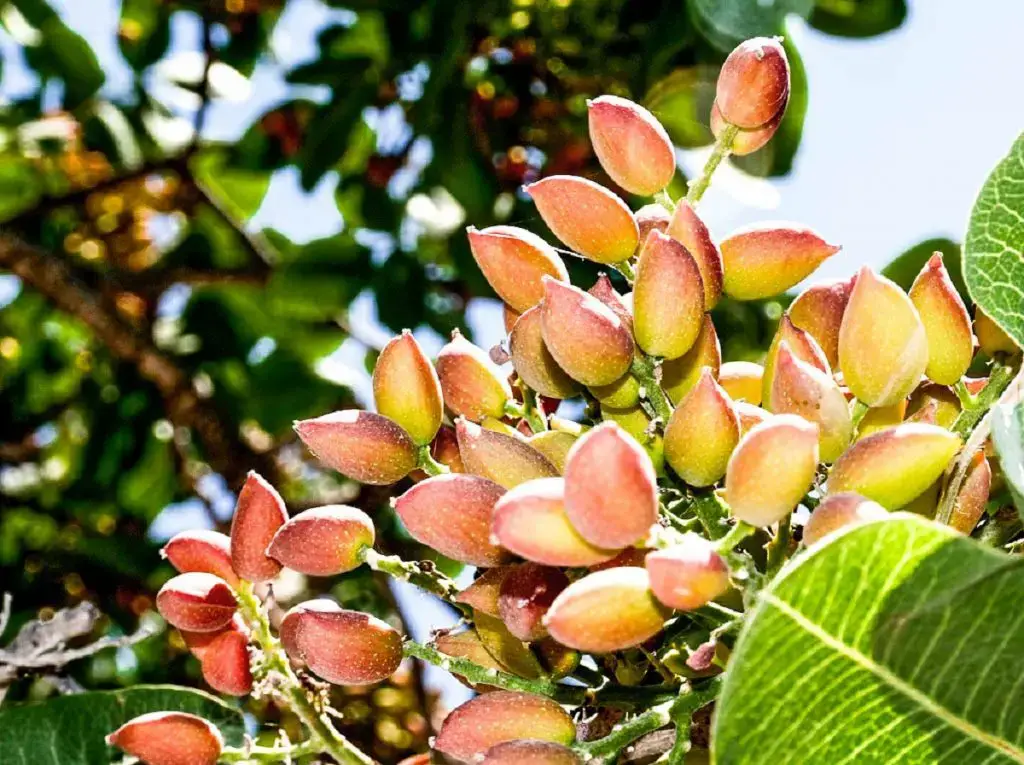Today we are going to talk about the planting of a highly demanded and valued dried fruit. It is about the cultivation of pistachio . One needs some unique care and you have to know very well how to sow to get profitability from this crop. It cannot be grown anywhere in the world since they need some special requirements.
In this article we are going to tell you everything you need to know about the cultivation of pistachio, its characteristics and some curiosities.
Pistachio cultivation

As we mentioned at the beginning of the article, the pistachio tree can be grown in any area of the world. The best area to grow pistachios is between 30 and 45 degrees north latitude . In other words, in a small part of the world, including the Mediterranean countries, the Middle East, China and the southern United States. As long as the soil is well drained, it can grow well in most soils because it cannot tolerate waterlogging. Drainage is the ability of the soil to filter rain or irrigation water. If this drainage is not very good, the water will accumulate and can lead to rotting of the roots.
The pistachio is a very rustic tree. It can withstand extreme temperatures of high temperature (50ºC) and low temperature (-30ºC). In the ripening season (June-July-August), it needs a lot of heat and a dry environment to avoid diseases. Winter must be cold to ensure proper flowering and pollination. Frosts are not a limitation of this crop because it blooms in late April or May. Optimal rainfall for this crop is 500 to 600 mm per year. Pistachio cultivation can be done in dry land and areas with less rainfall, but the yield is lower.
Aspects to take into account for the cultivation of pistachio

Before starting pistachio cultivation, you need to know some requirements. The first thing of all is to know the varieties of male and female. There is a wide range of traditional pistachio varieties that you can choose from. In addition, there are new varieties that have been developed in recent years due to technology and its development that serves to increase the potential of the crops. For proper tree pollination, one male tree must be planted for every ten female trees.
The variety of the pistachio pattern must be taken into account. Most fruit trees are planted grafted. In this way, the master variety is selected according to the soil in which it is being cultivated and the grafted variety is only selected with production criteria. One of the fundamental aspects in the cultivation of pistachio is the plantation framework. The most common is 6-7 meters between rows and about 5 meters between trees. This tree has to adapt according to the conditions.
The fruit trees can be planted both in root ball and bare root. Depending on the time of year you want to plant, your selection of trees will vary. On the one hand, the root ball can be planted at any time of the year, while bare-rooted trees can only be planted during the winter time.
The graft is an important aspect to consider. Grafted plants can be bought in nurseries and grafted in the field. Option one is the most comfortable of all but the most expensive . The second requires planting the stock first and then grafting all the trees.
Sowing

Once you have decided all the above aspects, you have to prepare the ground for planting. It is best to carry out deep cross soil work. To do this, use a shovel plow. Then make a pass with a cultivator to be able to leave the finest soil. It is important that just after planting the trees they have to be tutored for proper growth and protected with a mesh.
Some of the keys to growing pistachio are the following:
- Formation pruning: It is carried out in the first 5-8 years, during which the crops are not fully productive. The objective is to make the tree take the desired shape. The ideal shape is a vase with three main branches and no more than one meter in height. Using this form, better yields can be obtained and it is easier to harvest.
- Production pruning: this pruning is carried out the rest of the years that the tree is productive in winter. The objective is to be able to achieve aeration and luminosity inside the glass. In this way, it is possible to maintain a high production that is the main objective of this plantation.
Pistachio cultivation can be carried out with different types of soil management. In traditional dry land, the soil is cultivated. Typically use a plow board or loose sub plow for one or two deep passages to fluff up the soil and promote water entry. In addition, repeated field crops are done in summer to control weeds.
However, it is also possible to grow pistachios with ground cover only on the street or on the entire surface. In this type of handling, frequent cutting is essential. They allow even coverage and prevent excessive growth. Complete herbicides are the best option to avoid weeds around trees.
Irrigation and maintenance
Depending on the species, the water requirement of pistachios is between 300 and 600 mm. In general, in arid regions, these needs are met with irrigation facilities of 4,000 to 6,500 cubic meters per hectare.
Local irrigation is very suitable for the cultivation of pistachios. Through this irrigation method, floods can be avoided. It responds better to large infrequent irrigations than to small very frequent irrigations.
Pistachio is a very rustic crop. Therefore, pests and diseases have little impact on it. The main pests are biting insects that are active in summer and damage the shell.
I hope that with this information you can learn more about the cultivation of pistachio and its characteristics.
